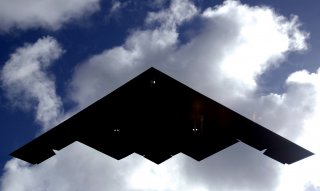Nuclear War: What Are the Chances of an Atomic Holocaust in 2021?
The world has made it more than 75 years, since the end of World War II, without a nuclear war. But how likely is the threat of nuclear war today?
The world has made it more than 75 years, since the end of World War II, without a nuclear war. But how likely is the threat of nuclear war today?
That was the topic of a debate, published this week on the website of the Bulletin of the Atomic Scientists, between two pioneering figures in modern technology. The two men are Martin E. Hellman, a Stanford professor and co-inventor of public-key cryptography, and Vinton Cerf, the co-inventor of the Internet’s TCP/IP protocols and architecture, and currently the VP and Chief Internet Evangelist of Google. The two men are also old friends, from the days when both worked as assistant professors at Stanford University.
The debate was conducted on a question: “Should the US use quantitative methods to assess the risks of nuclear war and nuclear terrorism?” Hellman took the quantitative side, while Cert argued for qualitative.
“Some, including my friend and colleague, Vinton Cerf, prefer a qualitative analysis for reasons he explains in his companion article,” Professor Hellman said. “Others argue that a quantitative estimate of the risk of a full-scale nuclear war is not possible because such an event has never occurred. They are right in the limited sense that it is not possible to determine if the risk of a nuclear war is one percent per year versus two percent per year. But it is possible to upper and lower bound it.”
“I would prefer for humanity to endure and not obliterate itself,” Cerf said. Both Hellman and I consider nuclear deterrence—threatening to destroy civilization in an effort to preserve the peace—to be untenable as a long-run strategy. But we differ on the need to quantify the risk of deterrence failing.
Cerf also offered a hypothetical.
“Imagine that a man wearing a TNT vest were to sit down next to you and tell you that he wasn’t a suicide bomber. Rather, there are two buttons for setting off his explosive vest. One was in the White House with Trump for the last four years, and recently was given to Biden. The other is with Putin in Moscow. You’d still get away as fast as you can!”
Cerf also noted that as of late last year, there were 13,410 nuclear weapons in the world, over 90 percent of them belonging to either the United States or Russia.
Hellman also looked at percentages.
“If you agree with my reasoning that the risk of a full-scale nuclear war is less than ten percent per year but greater than 0.1 percent per year, that leaves one percent per year as the order of magnitude estimate, meaning that it is only accurate to within a factor of ten. For related reasons, that one percent per year estimate really spans a range from roughly 0.3 to three percent per year.”
Stephen Silver, a technology writer for The National Interest, is a journalist, essayist and film critic, who is also a contributor to The Philadelphia Inquirer, Philly Voice, Philadelphia Weekly, the Jewish Telegraphic Agency, Living Life Fearless, Backstage magazine, Broad Street Review and Splice Today. The co-founder of the Philadelphia Film Critics Circle, Stephen lives in suburban Philadelphia with his wife and two sons. Follow him on Twitter at @StephenSilver.

